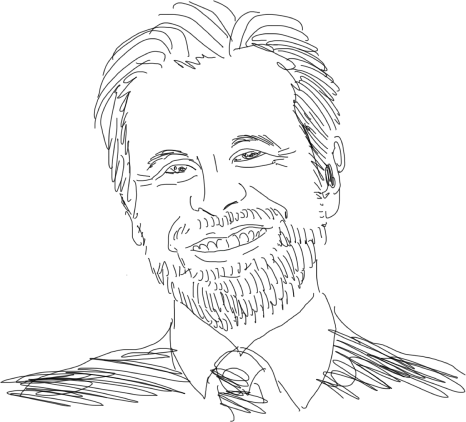From the Director, April 2022
Updated Jul 20, 2022
AAM Accreditation
Every 10 years since the 1970s, the DIA goes through an evaluation process called accreditation to show that we follow the highest standards of practice in the art museum industry. Many organizations in different fields (schools, hospitals, etc.) are subject to a similar process from which we all receive high profile, peer-based validation of the organization’s operation and impact. In the museum field, the American Alliance of Museums (AAM) administers the accreditation. If granted, it helps increase, in our case, the DIA’s credibility and value to funders, policy makers, insurers, our community and peers. It is, in fact, a powerful tool to leverage change and it tremendously helps facilitate collaboration among peer institutions. As an example, it helps us develop loan exhibitions -- museums are more comfortable loaning their works of art to accredited organizations, and we have our big Van Gogh one happening in October!
For the last sixteen months and under the coordination of my colleague Barbara Heller, the DIA team has been preparing for our upcoming accreditation. Last November we submitted our application which included a Self-Study with 13 required attachments and 11 additional documents related to our mission, vision and strategic goals, inclusion, diversity, equity and access work, internal policies, financial position, governance, and bylaws, among many others. Updating and carefully preparing this material required hours of help, in-depth expertise, and eagle eye attention from many staffers. The AAM staff reviewed our materials and approved them last February and greenlighted the next step in the process: the site visit.
Last week we welcomed two AAM visiting committee members and highly respected museum professionals for our site visit. Over two full days they toured our facility (public and non-public areas, including our grounds and offsite storage) and met with staff groups representing all aspects of the DIA’s operations, including our collections management team, front line staff, building operations team, leadership team, curatorial, conservation and education teams, just to name a few. Furthermore, they met and had social interactions with board members and volunteers, through meetings, receptions, and dinners. It was an extensive, meticulous and exhaustive exercise for everyone involved.
They will be preparing a report on what they have seen, heard, and read related to the DIA, and they will submit it to the AAM Accreditation Commission. While we wait for the final verdict, it is important to recognize that from our own perspective the accreditation application is an extraordinary opportunity to stop and internally review all aspects of our operation, as we continually glean insights and reflect on what we do and how we do it. Our goal is to always be mission-driven and to provide the highest possible standard of service to all of you so that you enjoy the most memorable and positive visitor experience. The effort takes a village of both passionate staffers and very generous board members and volunteers to whom I am extremely grateful for their time and commitment with the accreditation work and for making the DIA one of the best museums in the country.

DIA Director Salvador Salort-Pons pictured wearing a blue suit and standing in front of the museum
AAM Accreditation
Every 10 years since the 1970s, the DIA goes through an evaluation process called accreditation to show that we follow the highest standards of practice in the art museum industry. Many organizations in different fields (schools, hospitals, etc.) are subject to a similar process from which we all receive high profile, peer-based validation of the organization’s operation and impact. In the museum field, the American Alliance of Museums (AAM) administers the accreditation. If granted, it helps increase, in our case, the DIA’s credibility and value to funders, policy makers, insurers, our community and peers. It is, in fact, a powerful tool to leverage change and it tremendously helps facilitate collaboration among peer institutions. As an example, it helps us develop loan exhibitions -- museums are more comfortable loaning their works of art to accredited organizations, and we have our big Van Gogh one happening in October!
For the last sixteen months and under the coordination of my colleague Barbara Heller, the DIA team has been preparing for our upcoming accreditation. Last November we submitted our application which included a Self-Study with 13 required attachments and 11 additional documents related to our mission, vision and strategic goals, inclusion, diversity, equity and access work, internal policies, financial position, governance, and bylaws, among many others. Updating and carefully preparing this material required hours of help, in-depth expertise, and eagle eye attention from many staffers. The AAM staff reviewed our materials and approved them last February and greenlighted the next step in the process: the site visit.
Last week we welcomed two AAM visiting committee members and highly respected museum professionals for our site visit. Over two full days they toured our facility (public and non-public areas, including our grounds and offsite storage) and met with staff groups representing all aspects of the DIA’s operations, including our collections management team, front line staff, building operations team, leadership team, curatorial, conservation and education teams, just to name a few. Furthermore, they met and had social interactions with board members and volunteers, through meetings, receptions, and dinners. It was an extensive, meticulous and exhaustive exercise for everyone involved.
They will be preparing a report on what they have seen, heard, and read related to the DIA, and they will submit it to the AAM Accreditation Commission. While we wait for the final verdict, it is important to recognize that from our own perspective the accreditation application is an extraordinary opportunity to stop and internally review all aspects of our operation, as we continually glean insights and reflect on what we do and how we do it. Our goal is to always be mission-driven and to provide the highest possible standard of service to all of you so that you enjoy the most memorable and positive visitor experience. The effort takes a village of both passionate staffers and very generous board members and volunteers to whom I am extremely grateful for their time and commitment with the accreditation work and for making the DIA one of the best museums in the country.

